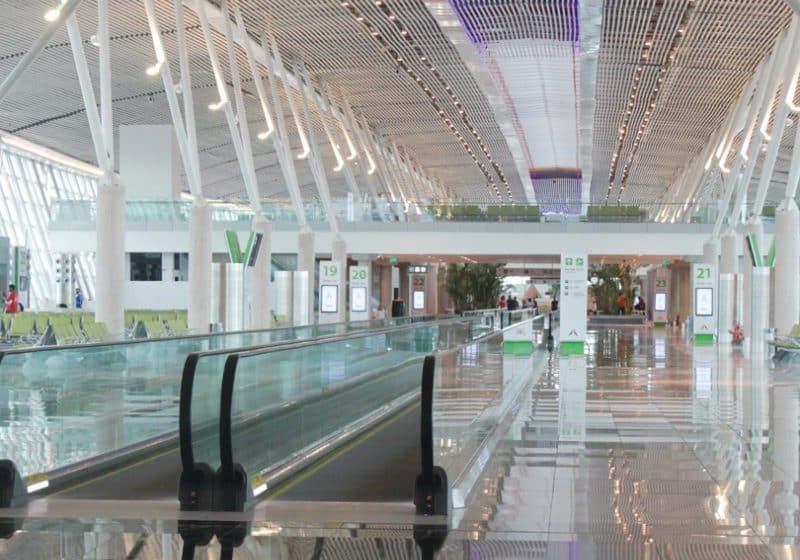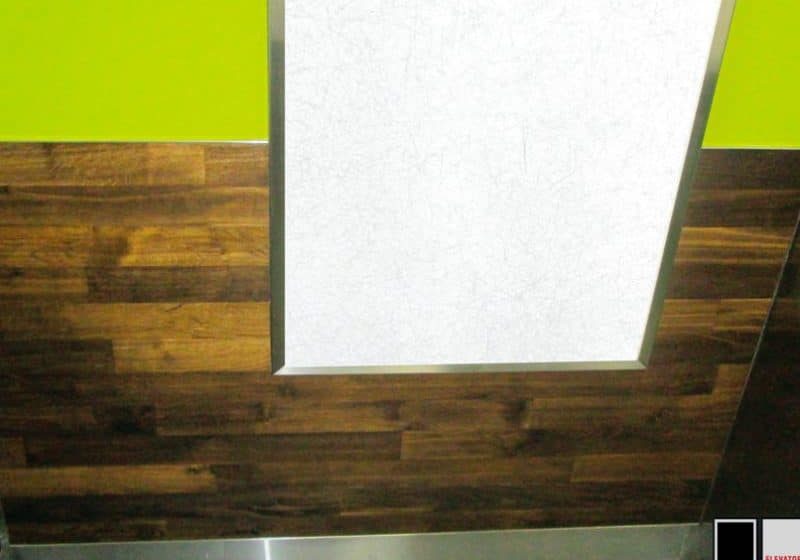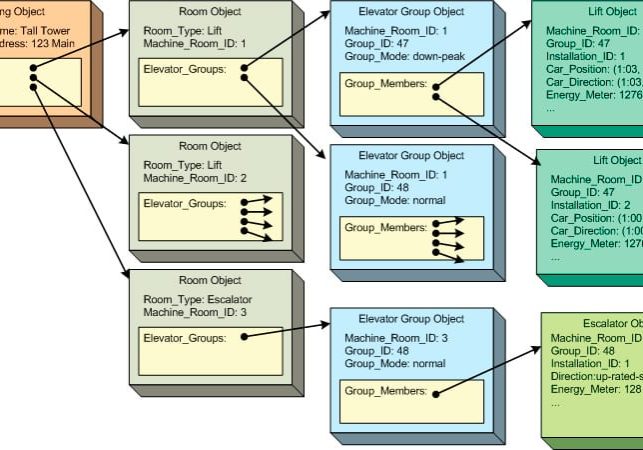Magical Thinking
Aug 1, 2014

Italian architect/designer Paolo Tempia Bonda talks about the evolution of his career, his 15-year collaboration with Schindler and the science of design.
Winning a pair of international competitions — to design the face of a Swatch watch in 1989 and a Sharp stereo system in 1996 — gave Paolo Tempia Bonda the confidence and conviction he needed to pursue his dream of becoming a successful architect, entrepreneur and design consultant. As a Schindler collaborator for more than 15 years and the owner of MYdesign srl, Bonda has achieved his creative and business goals, and continues to evolve and strive for more.
Living and working in the Susa Valley, between the French border and Turin, Italy, Bonda said he has realized over his 25-year career that he most enjoys working with industrial clients to help mass produce aesthetically pleasing and technologically innovative products. In this context, he has worked with Schindler to develop the Deco 2.0 line of color, material and finish options for the 5500 passenger elevator for commercial and office buildings. With the motto “Freedom of Design,” the line’s options include:
- An expanded array of warm, neutral and cool colors
- Materials such as wood, stainless steel and clear and colored glass panels
- Straight or curved cabin shapes
- Accents such as mirrors and lighting, including energy-saving LEDs
- It is through such work that Bonda hopes to make his mark. He said he is passionate about it:
“Designers have the defect of falling in love with their projects and considering them their children. I include myself in this category, as I get attached to everything I do. If we stay in the field of lifts and I think back on my years of activity with Schindler, I can say that every new product I designed for them I consider my child. It has been both a challenge and an opportunity for me to contribute a little to changing the world.”
“It has been both a challenge and an opportunity for me to contribute a little to changing the world.”
Bonda’s association with Schindler and, consequently, his discovery that designing for mass production is his forté, came about by chance. While earning his Architecture degree from the University of Turin, Bonda worked as an illustrator, prior to the domination of computer-generated graphics. Primarily, he assisted older and more experienced colleagues with project development. He enjoyed the creative aspect of the work. In 1990, a friend of Bonda’s and employee of Schindler Italy thought of Bonda when he heard about a job opening at his company for an external design consultant. Bonda remembers:
“I made an aesthetic proposal regarding the use of new materials and colors for the inside of the cabin, and, as they liked my idea more than the others under evaluation, I started an intense and well-structured collaboration with them, which has lasted to the present day.”
Throughout the 1990s, he continued to work as a designer for large companies such as Hitachi and Italian metalworks company bticino. Winning the Sharp design competition resulted in a trip to Japan, which strengthened Bonda’s resolve to continue working with and building an international client base. On top of all this, Bonda had an entrepreneurial streak, so in 2000, he launched MYDesign in Italy, “where I constructed buildings which I also designed and where I was in charge of everything, from the purchasing of the land, [to] the design itself to the selling of the property.”
“Color has always been something magical for me. ”
The heavy workload resulted in amassing a wealth of knowledge, he said, which he shares as an instructor for Istituto Europeo de Design in Milan, Italy. His lessons combine technology and color, which were both ingrained in Bonda’s life early on. His father owned a wool-dyeing factory in Biella, Italy, which utilized both color and technology, and his grandparents were artists who often invited the young Bonda to paint alongside them. “Color has always been something magical for me,” Bonda said.
From his family to mentors such as designer Clino Trini Castelli, Bonda said he has gained important experience that has nurtured his professional and creative growth. With MYDesign, he enjoys the fact that “every day is different” and said what is most challenging is figuring out how to stand out in an ever-more-complex and competitive world. The father of nine- and seven-year-old children with his partner of 22 years, Bonda acknowledges that sometimes his intense focus on work leaves little time for anything else. For that reason, he spends any spare time he has with his family.
If there is one aspect of the elevator industry Bonda would change, it would be its rigidity. “I think what is lacking in the lift industry is the visionary folly which allowed companies like Apple to revolutionize the world and write a piece of history,” he said, continuing:
“Many ideas remain unattainable, as no one dares to realize them by breaking the current rules dictated by the market. I, myself, know these rules well and often adapt to them, as I know my clients expect guaranteed economic success. Indeed, my products sell well, but I am convinced we need something more — to go beyond.”
The projects that most fascinate Bonda are those which innovate and revolutionize. He thinks of elevators as something far beyond simple pieces of machinery:
“Lifts themselves are a means of transport on the same level as cars, as well as objects of design on the same level as furniture. They are also architecture and a means of communication. In the beginning, computers were machines which carried out calculations, but then they became something else, and changed our way of both working and thinking. Telephones and radios were tools to perceive sound over great distances, but then they barged into our lives, radically changing our habits. How come lifts today are still mainly considered machines that go up and down? How come they haven’t been enriched with new significance? Why can’t we see them in a different way? A lift isn’t just the technological/technical component of a building. It is an architectural and sensorial space, a place of relationships and socialization, as well as, perhaps, other things we can’t yet imagine, such as museums or works of art in motion. There is still a great deal to discover.”
Bonda describes himself as tenacious, energetic and willful, which makes it relatively easy for him to multitask and bring energy to his work. Further, his scientific approach has helped earn the respect of colleagues with technical backgrounds who otherwise might view design as an afterthought. “I always try to merge technical aspects with those of art, and that often leads to success,” he observes.
A job well done is Bonda’s ultimate goal. In order to achieve this, Bonda said he must be fully convinced of it himself, as well as receive positive feedback from clients. He remembers: “Recently, a manager from Schindler sent me a note on which was written, ‘Thanks for having made possible the impossible.’ There you have it — for me, the greatest reward.”
Bonda on the Process of Design
Following are excerpts from a recent Schindler interview with Paolo Tempia Bonda (PB), who talks about elevator design and specifics of the 5500:
Q: What fascinates you about elevator design?
PB: I like elevators. Not necessarily as a user, but as a designer. They combine architecture and industrial elements. They are effectively little rooms, so they have all the architectural characteristics and, at the same time, all the challenges, of industrial design. In this way, elevators combine two of my main interests.
Q: How important is the design and look of an elevator?
PB: Many people are nervous in small spaces, and I count myself among them. This makes it even more important to make the cab comfortable. In addition, an elevator is an integral part of the architecture and should be coordinated with the other parts of the building, whenever possible, using the same materials and finishes. Otherwise, it’s just an empty box without a connection to a building’s architecture.
Q: How do you start a project like the Schindler 5500?
PB: First, I know Schindler very well. I am working with Schindler more like I am a part of the company than a consultant from the outside. This gives me insight about what the company needs. My first thoughts with the design itself, though, are for the customers. I try to imagine what they would like to have — needs of which they are not even aware. This is innovation.
Many big companies try to solve the problems of the market through asking the market, but there are no answers there. This is not innovation. True innovation is coming up with an answer for which you don’t yet have the question.
Q: How do you solve the contradiction between design and cost?
PB: At the beginning of my career, my approach was a little more naïve than it is now. I would go to the customer and show my designs and would be stopped by fears it would be too expensive or complicated to produce. Now, I tone my ideas down a little so that my designs are perhaps easier to mass produce. Even now, I sometimes receive resistance when ideas are considered too early or risky. After all, Schindler wants to be sure about what it brings to market. Of course, my nature is to be innovative, so sometimes I have to force a little bit, but that is the compromise.
Q: What is your process for finding new materials?
PB: I am always on the lookout for new techniques or technology. When I find something new, I first try to understand it, then reflect on how it can be used and on which materials. This, of course, takes time. Sometimes, I am showing something new to Schindler, but have been developing it for two to three years to perfect a process or technique.
Q: Describe the new process for printing on glass used in the 5500.
PB: There are two kinds of glass we use. Back-painted glass, as the name suggests, has its back painted with either flat or metallic colors. The second type of glass is the innovative one. It is painted using a new digital technology, applying film with a printer that creates new effects, while working with different kinds of finishes, such as satin on the back and metallic on the front. With this new technique, we can create a much broader range of effects and patterns. Surfaces such as wood and stainless steel can also be digitally printed.
Q: What do architects expect when it comes to elevator design?
PB: In my opinion, there are two types of architects: one interested in controlling everything and the other interested in finding the right thing. The latter might look for an elevator that works and is affordable. The other might look to put his or her mark on everything, including the elevator. These architects can present challenges, since standardizing is the most cost effective way to produce an industrial product. This is where the Schindler 5500 comes in. It gives architects the opportunity to express their own tastes and put their own signature on the unit, while still being standardized enough to be cost effective to produce.
Get more of Elevator World. Sign up for our free e-newsletter.









